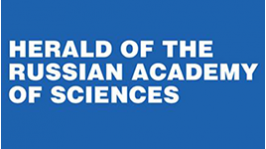Неэргодическая экономика
Авторский аналитический Интернет-журнал
Изучение широкого спектра проблем экономики
На английском языке
The article examines the situation of Russia falling into the epicenter of geopolitical shifts in 2022, when the country found itself involved in the hybrid warfare with the Collective West. The novelty of our approach consists in reconstructing key events of the geopolitical competition of the last 15–20 years with the use of an extensive range of related concepts from various fields: economics (Trout’s mistake, neocolonialism), cybernetics (Ashby’s Law and Sedov’s Law), management (external management, hybrid warfare), synergetics (synergetic effect, system complexity), political science (security, freedom, power structure), political economy (Arrighi’s cycles of capital accumulation, global capital center, rate of return), institutionalism (shifting risks from the physical world to the social world), geography (horizontal diffusion of innovations), psychology (war of meanings, war of nerves). This made it possible to bring together many poorly compatible phenomena of different nature, synthesize the concepts used and reveal the logic behind the struggle of geopolitical players for world hegemony. To deepen the analysis, we provide our own typology of world wars and their characteristics. We prove that the special military operation in Ukraine exposed the impasse of Russia’s economic policy and consolidated other countries in a hybrid war against the United States, thereby becoming a key event in history and giving rise to a global geopolitical confrontation between the West and the Non–West. Our main conclusion is that Russia has objectively found itself in the epicenter of geopolitical turbulence, and, consequently, cannot avoid a direct collision with the Collective West; therefore, over the next 15–20 years the country will have to go through all the stages of a new hybrid world war.
21.09.2022
The article puts forward a polycausal concept of social evolution (PCSE) based on taking into consideration the structure of the competition mechanism. The novelty of the PCSE lies in the simultaneous consideration of a set of interrelated variables of the competition mechanism that exclude the establishment of simple cause–and–effect relationships typical ofmonocausal theoretical constructions. A structural scheme of the PCSE includes the subject, object, environment and the process of competition; all of them are directly associated with such civilizational phenomena as technology, institutions, culture and ecosystem; together, these variables determine the nature of economic growth and the type of capitalist (market) relations. This approach can be called a method of structural (organizational) competition. To illustrate the PCSE and test its explanatory capabilities, we look for answers to the following classic questions: Why has human civilization matured in Eurasia rather than in other continents? How did humanity manage to break out of the Malthusian trap? How can we explain the Needham Puzzle? Why are some countries and peoples rich, while others are poor? Why do some poor countries and peoples manage to catch up with rich ones, while others do not? How can we explain the “case of the USSR”? The proposed PCSE is used to reconstruct key events in the history of human civilization. For this purpose, we put forward a structural outline of social evolution, which includes basic principles and mechanisms that determine certain results of the development of human societies. In conclusion, we make an attempt to use the PCSE to designate reference points of a modern civilizational crisis.
29.01.2022
The transition to the post–industrial society is linked with the fundamental restructuring of the national economy, large–scale lay–offs and altering requirements to occupational qualification. The paper aims to determine the main thrusts of the upcoming changes. Methodologically, the research relies on the theories of vital resources and technological change. The author applies an interdisciplinary approach based on the findings from ethology, medicine, sociology, psychology, political science and economics, and methods of system analysis. In particular, he projects the theory of vital resources onto the economic development of the civilisation to elaborate on the character of the fourth vital mega–wave connected with the emergence of the industry of leisure as a dominant economic sector. The author demonstrates that such a course of events brings the managerial problem of interaction between the ruling elites and the masses to a new level. Having considered Calhoun’s law, Maslow’s pyramid of needs and Bauman’s rule, the researcher reveals social ambivalence of the economy of leisure, which has the potential for both the evolution and degradation of humankind. He discusses the initiative of the Russian government bodies to introduce a four–day working week, and points to the necessity and feasibility of this measure. The researcher suggests abandoning ambitious global projects in favour of regionalisation of the labour market when managing the economy and the higher education system. Taking into account the results of the projection of the Guex – Crevoisier matrix on the university sector, he argues that Russian universities should switch to stronger orientation towards the economic needs of the territories where they are located.
16.01.2022
The study tests the hypothesis that Russia’s transition from flat to progressive income taxation will produce revenue that would be sufficient for the advancement of high–tech industries. To test this hypothesis, we considered two scenarios of the reform – the two–tiered system, which has been implemented since 2021, and the project of a four–tiered system proposed by the Liberal Democratic Party. To estimate the effects of the tax reform, we calculated the revenues from taxing high–income taxpayer groups and subgroups at specific tax rates. As a result, it was found that the reform could produce 187 billion roubles in extra revenue, which means that there is a vast discrepancy between the calculated estimates and the government’s expectations (60 billion roubles). In other words, the Russian government significantly underestimates the potential of the income tax. According to the second scenario, which aims to build a more sophisticated income tax system, the revenue would be 1.1 trillion roubles. Thus, a well–designed scale of the personal income tax will enable the government to considerably enhance this tool’s fiscal efficiency. The calculations of the extra revenue generated by the reform relied on the statistics of the World Inequality Database (WID) for 2019. To test the relevance of the input and output data, we conducted a comparative analysis at the micro–level by looking at the wage levels in Russian, American and European space corporations. We found that the micro–economic data are closer to the WID statistics rather than to Rosstat, which confirmed the accuracy of our results. Our calculations have confirmed the general hypothesis and showed that the extra revenue from the reform will enable the government to fully modernize microelectronics and the geothermal industry in Russia.
29.12.2021
The paper considers the influence of megatrends, currently acting as drivers of changes taking place in society, on the structure of the emerging economy of post–industrial society. Under their influence, a new economy is formed, focused on the use of such a resource as time, the amount of which, available to people, is increasing as robotomics develops. The research is based on the study of five global trends in the development of modern society: demographic transformations; natural resources depletion and climate change; changing geo–economic and geopolitical landscapes; digitalization and development of new technologies; comprehensive human welfare: wealth, health and knowledge. The article proves that these trends seriously challenge the future of humanity and fundamentally change the structure of the economy and employment. The response to the megatrends challenges is the formation of new directions in the economic structure that help to respond to them and deal with their negative implications. We establish that megatrends have contributed to the development of such areas as silver economy, circular economy, robotomics, peer–to–peer economy, and laid the foundation of a spiritual and moral economy and leisure economy. The work concludes that there are prerequisites in society for the transition to the economy, in which social effects will prevail over economic ones. High level of technology development and digitalization help to make such a transition to an “economics with a human face”. The formulated principles of adaptation to the emerging economy enable countries to develop a transition strategy with minimal social and economic costs. The novelty of the research consists in comparing megatrends with changes occurring in the structure of the economy and the labor market, as well as in substantiating social orientation of the post–industrial economy, which is formed under the influence of global trends in social development.
11.12.2021
The article considers the results of the third wave of identification of world–class universities in 2021, obtained on the basis of the authors’ methodology. The comparison of the new results with the data for the 2017 and 2019 allowed us to examine in more detail some well–established mental stereotypes of a geopolitical and national character. In particular, the role of the North American university center is declining, but the universities of the United States and Canada are still models for the rest of the world, both in terms of the breadth of scientific diversification and in terms of the research results obtained. The seemingly self-evident “decline of Europe” concerning the market of advanced universities is not confirmed. Moreover, there is reason to talk about the growing activity of the European geopolitical center, whose universities not only hold their positions but also rapidly increase the number of highly specialized institutions and are at the forefront of training personnel for post–industrial society. Contrary to many expectations, the Asian university market is still far from becoming a distinctive authentic phenomenon and is still only an example of a relatively successful "copying model" of Western models. Quite unexpected was the alarming conclusion about the superiority of advanced universities in Latin America over universities in the post–soviet space in general and in Russia in particular.
26.10.2021
The subject of this study is the innovation market. To understand the laws of its functioning, this article introduces the concept of a technology frontier. This is understood as the relative productivity of labor (relative to the technological leader – the United States), the achievement of which makes it justified for developing economies to move from large–scale borrowing of foreign new technologies to their development within the country. The purpose of the article is to determine the specified frontier, for which a simple econometric model based on international statistics for 61 countries is proposed. The modeling methodology extends Schumpeterian ideas about two innovative stages: the creation and dissemination of technologies. The technology frontier is interpreted as the point of intersection of the curve of specific costs for the purchase of technologies abroad with the curve of costs for their development and creation within the country. It is assumed that both types of costs depend upon the relative labor productivity. The share of R&D costs in GDP was used as a proxy variable for technology creation costs and the ratio of the balance of payments for intellectual property to GDP was used as a proxy variable for borrowing costs. To improve the accuracy of the calculations, countries were clustered into two groups: advanced, for which the technology frontier has been crossed and their own developments of new technologies prevail, and developing, for which the problem of the technology frontier remains important. Estimates have shown that the current value of the technology frontier is in the region of 70% of labor productivity in the United States. The comparison with previous estimates shows that this value tends to increase, which creates additional difficulties for the transition of catching-up countries from the mode of borrowing to the mode of creating new technologies.
26.09.2021
Data are presented for 2021 on the rating of Russian economics journals, taking into account their international success: entering the leading Web of Science and Scopus databases and presenting their content in English. The calculations carried out using the author’s algorithm for ranking journals make it possible to establish that at present 25 Russian periodicals in economics have reached a sufficiently high scientific level and have become competitive in the international market of scientific products. If the concept of the market is interpreted in the broadest possible sense – as a set of competing participants entering into specific transactions that give them certain benefits, based on supply and demand for their services – then we can talk about a kind of revolution in the market of Russian economics journals due to the widespread use of strict academic standards and raising the scientific culture of domestic researchers. At the same time, the authors point to some negative aspects in the development of the pool of leading journals, including their high geographical concentration in only seven cities of Russia. Comparison of the parameters of the market for economics journals and the markets for journals in related disciplines – history, sociology, political science, and philosophy – showed that the competition for the right to be published in a prestigious Russian journal among economists is much higher than among representatives of other social sciences and humanities.
18.09.2021
The study’s relevance is due to the gradual transition of different countries of the world to a post–industrial economy, in which the share of industrial employment is significantly reduced. However, this process is usually associated with high social costs and management mistakes. Russia is not a happy exception to this rule. The article aims to identify the pain points of the Russian labour market and the higher education system caused by the transition process. For this purpose, based on the data of Rosstat, we considered the phenomenon of the educational bubble in the university sphere in 1992–2008 and the reasons for its occurrence.
03.07.2021
The article presents a simple model of economic growth based on the description of the dynamics of fixed capital formation. The main characteristic of the obtained fundamental equation of economic growth consists in an explicit link between the indicators of the GDP growth rate and the level of return on equity which allows not only obtaining the T. Piketty inequality, but also strictly determining the conditions for its implementation. The peculiarity of the fundamental equation of economic growth is in the postulation of the primacy of the capital circulation process which can provide an economic growth regime under certain conditions. The main difference between the author’s model and earlier constructions is the aggregation of most growth factors into one parameter. It is the profit rate (return on equity) which acts as the main driver of economic expansion. To strengthen the explanatory power of the fundamental equation of economic growth, the author considers two economic sectors – ordinary (with a low return on equity) and special (with a very high return on equity).
26.03.2021












